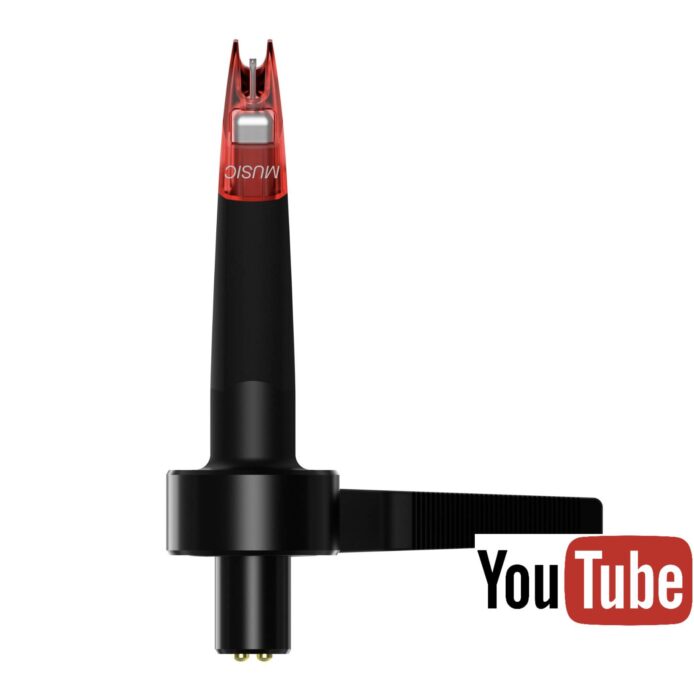The Article
GOLD 200 SPEAKERS FROM MONITOR AUDIO
27th November 2023
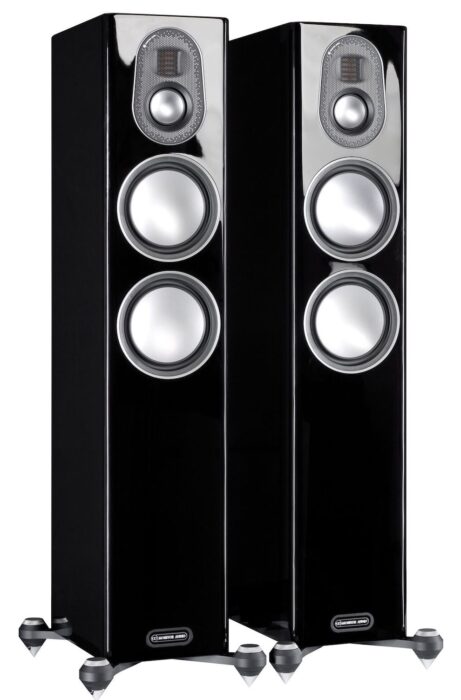
Circling back on these 3-way floorstanding speakers, Paul Rigby has two good reasons. One of which is long overdue
“Hang on a minute!”, you cry, “You’ve already reviewed the Gold 200 speakers!”
Yes. Yes, you’re quite right. However. There are two reasons I want to look again at the Monitor Audio 200s.
Firstly? This new review hopes to address a number of comments I’ve received over the years asking this question.
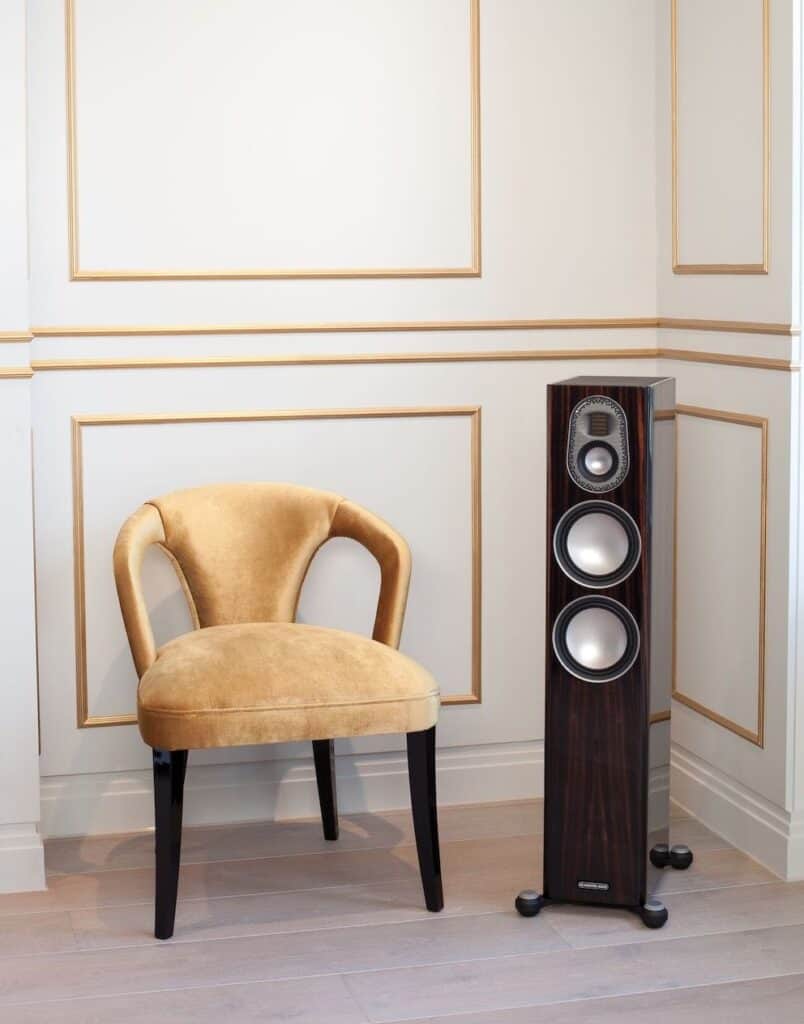
Should you, the reader or viewer, take note of my old reviews? Come to that, any old reviews from any reviewer or magazine or anyone? Are old reviews per se still of use years later? Are they still of use as reference?
That is, if I reviewed Product X now, would that review hold true years hence, in my opinion? Would I change my mind during that time. A product I liked five years ago, say, would I still like it now or would I do a 180 and see things in the product I didn’t see earlier or for those features I loved back then, would I dislike those same features now?
Tastes change, of course. Age? Well, it does funny things to funny people.
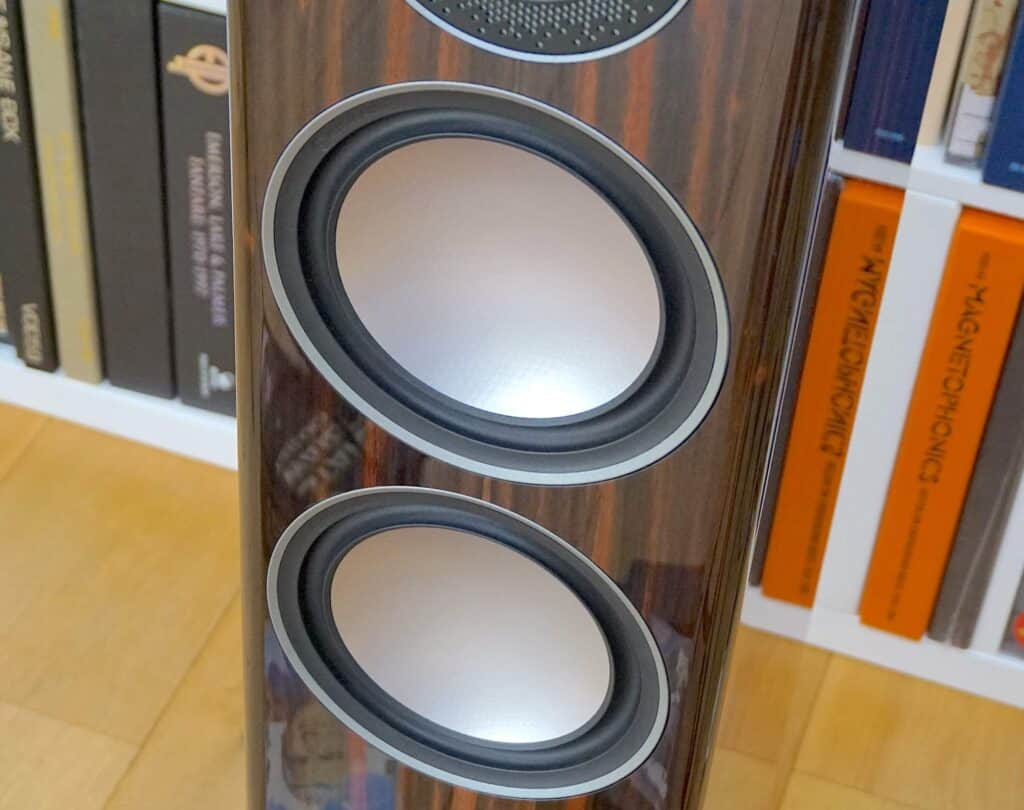
I was asked about this point and I replied way back then that I would make a note and I would circle back and look again. Well, I thought the time had come.
And I’ve chosen the Gold 200s to do that investigation.
But why? Why am I doing that with these Gold 200 speakers? Well, now we come to my second reason.
TWO REASONS TO…
This one is way overdue and has had me wracked with guilt for a long time. These floor standers are slightly unusual in that they are, in fact, 4 Ohm designs. They can be played in 8 Ohm HiFi systems and they work very well in an 8 Ohm system but ideally? To perform at their peak? You should connect your speaker cables to 4 Ohm pots on the back of your amplifier. Most people can’t do that because most amplifiers don’t have specialist 4 Ohm sockets and that’s fine.
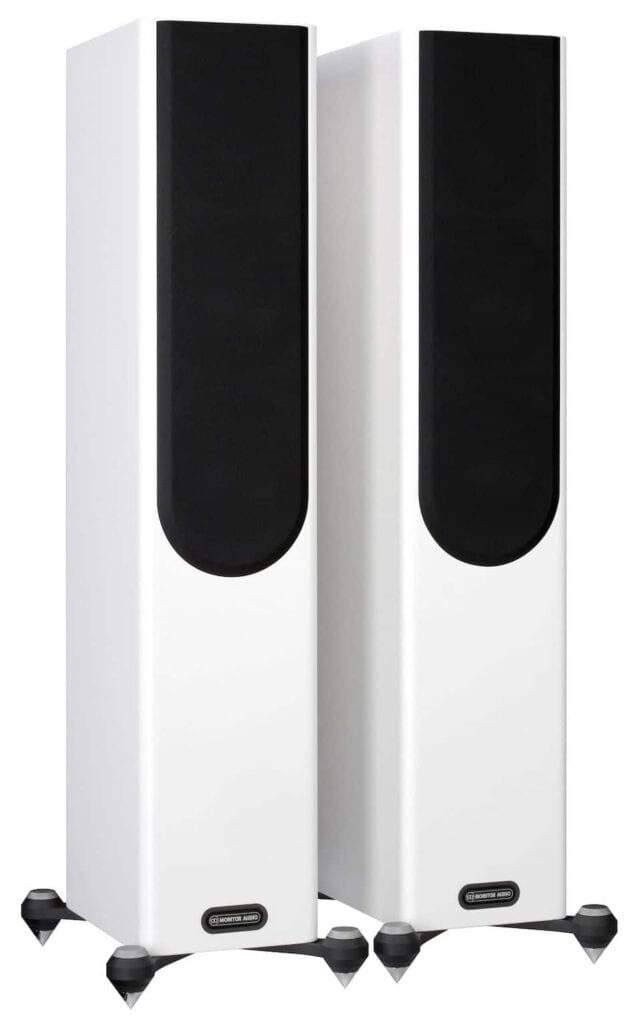
Most amplifiers work on a 4-16 Ohm range and can cope with anything you throw at them which, again, is fine. Saying that though, there’s nothing quite like having specialist 4 Ohm-specific sockets for 4 Ohm specific speakers. I wanted to do that test. And yes, some of you will say well that situation doesn’t apply to solid state amps, only valve amps and I have a valve amplifier here with 4 Ohm speaker sockets.
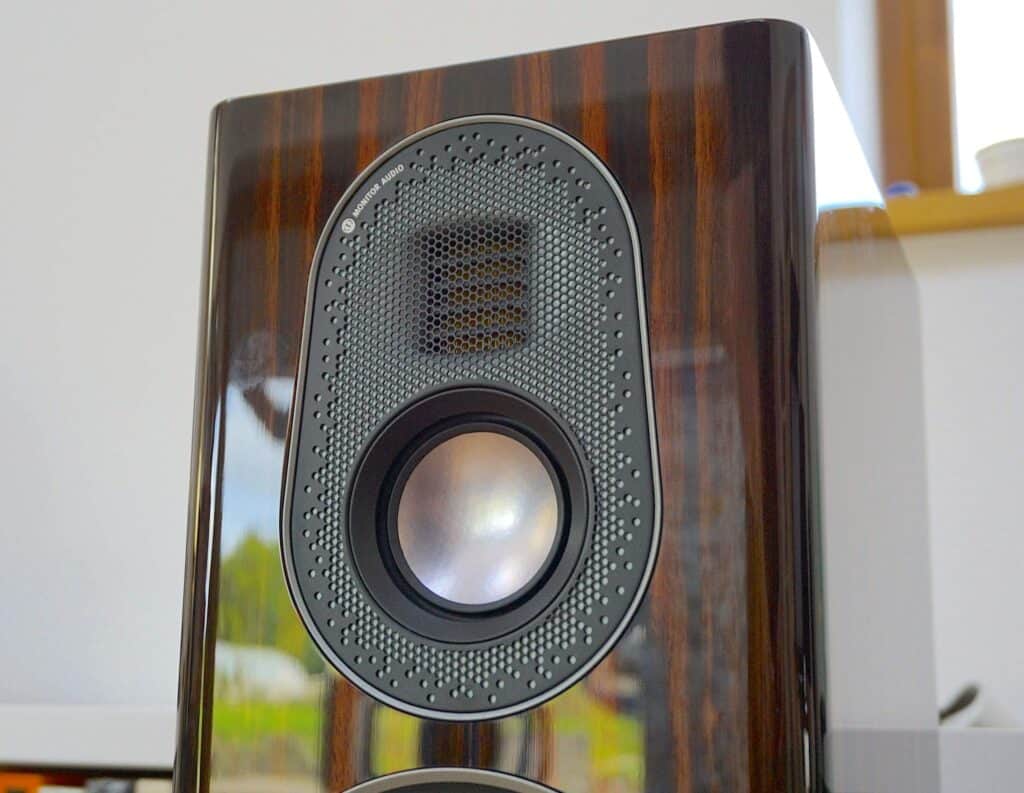
Even so, I have a hunch that, even in solid-state terms, that 4 Ohm figure would be highlighted in sonic terms. It’s a pity I don’t have a solid state amp here with 4 Ohm taps. Well, at least I can investigate that effect via a valve amp.
No matter. It’s about time I addressed this niche yet important design wrinkle.
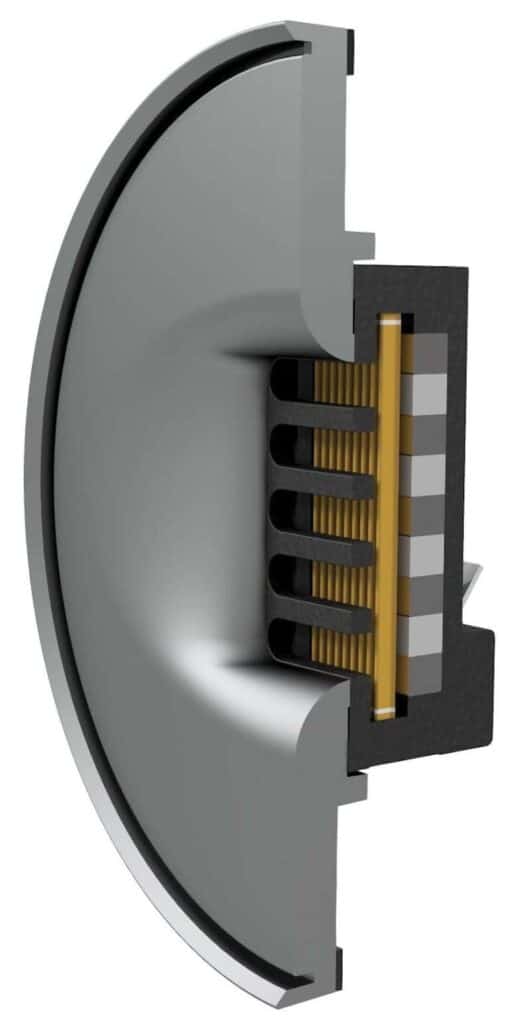
To remind you then, the Monitor Audio 200s are 3-way designs featuring two 165mm (6.5”) RDT II (Rigid Diaphragm Technology ) bass drivers beneath a 64mm (2.5”) C-CAM mid-range driver plus a MPD high-frequency transducer module which looks like a ribbon tweeter. At the back are a pair of HiVe II bass ports.
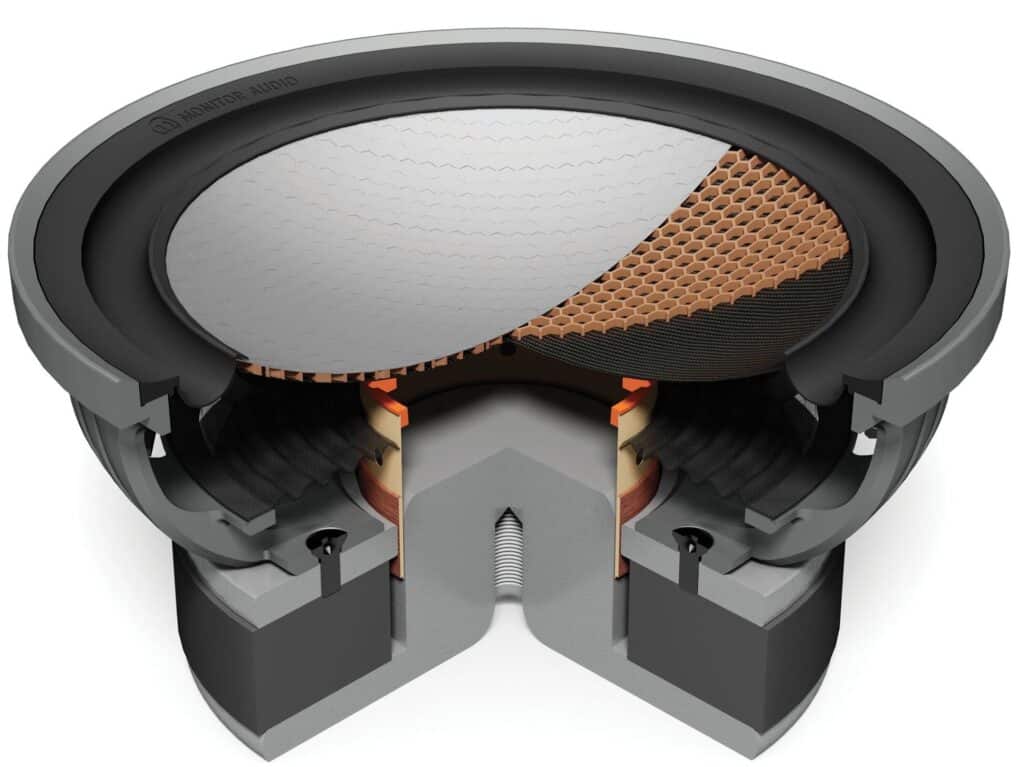
So let’s start with the basic sound test, then. Has a gap of three and a half years changed my point of view of the 200s?
I was interested to know myself. Time has passed, I haven’t used the 200s since I reviewed them, I had totally forgotten how they sounded and so hearing the 200s again was like receiving a pair of new designs. At least in review terms.
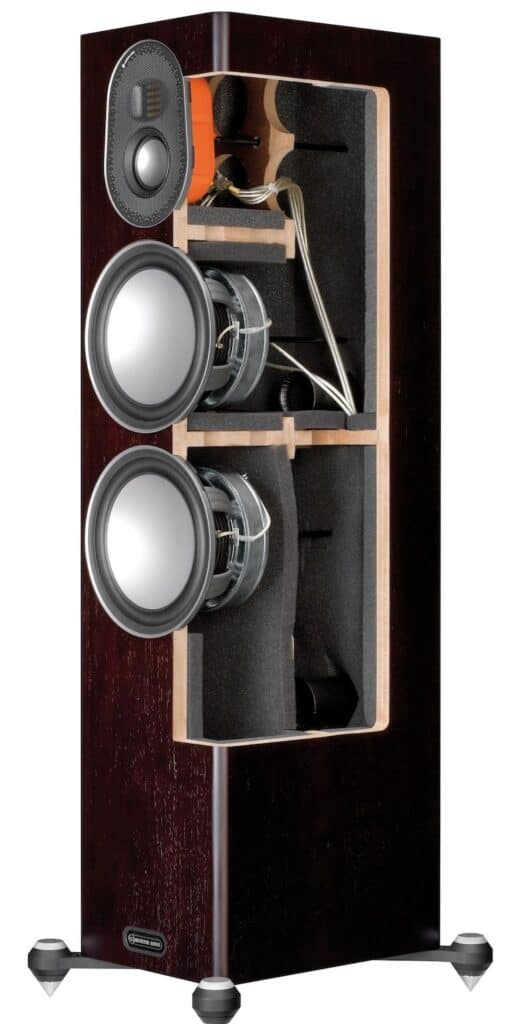
I purposely did not read my old review until I had completed my new sound tests. Honest, Guv.
Before we get to the comparison between the old and new reviews, to remind you, let’s look at the Monitor Audio 200s in sonic terms.
SOUND QUALITY
I began with CD and an early 80s pressing of Pink Floyd’s The Wall. I chose the high-energy track Run Like Hell – one of my favourite Floyd tracks – to press the Monitor Audios from the off. This is a busy song, with humungous bass, while upper frequencies are pushed to the max. It takes a mighty speaker design to keep control of this one.
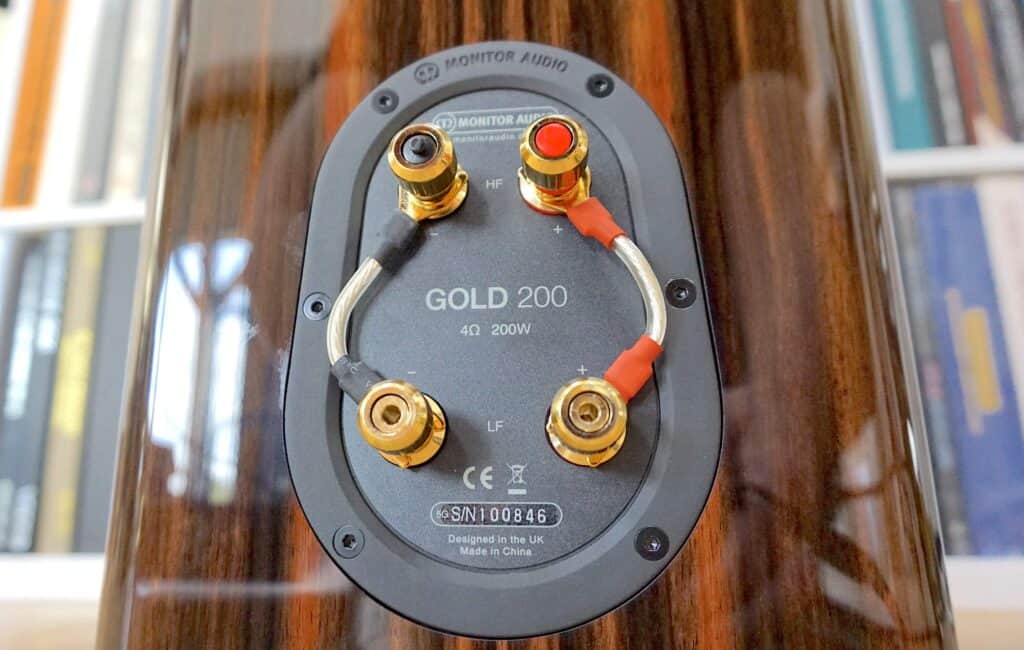
To begin, I wanted to know what I was getting for my money so I compared the 200s with the sub-£1000 Q Acoustic 3050i floor standers.
Starting this track, I immediately noticed the extra focus around the soundstage. The 200s collected all of the upper frequency information, tidied the whole thing up and collected it around the stereo image. Midrange noise from these speakers was low. Hence, clarity increased which meant that lyrics were easier to discern and backing vocals were smoother with more reverb. The backing vocals sat in new-found space that added a three dimensional aspect to the music. That tweeter really earns its corn here.
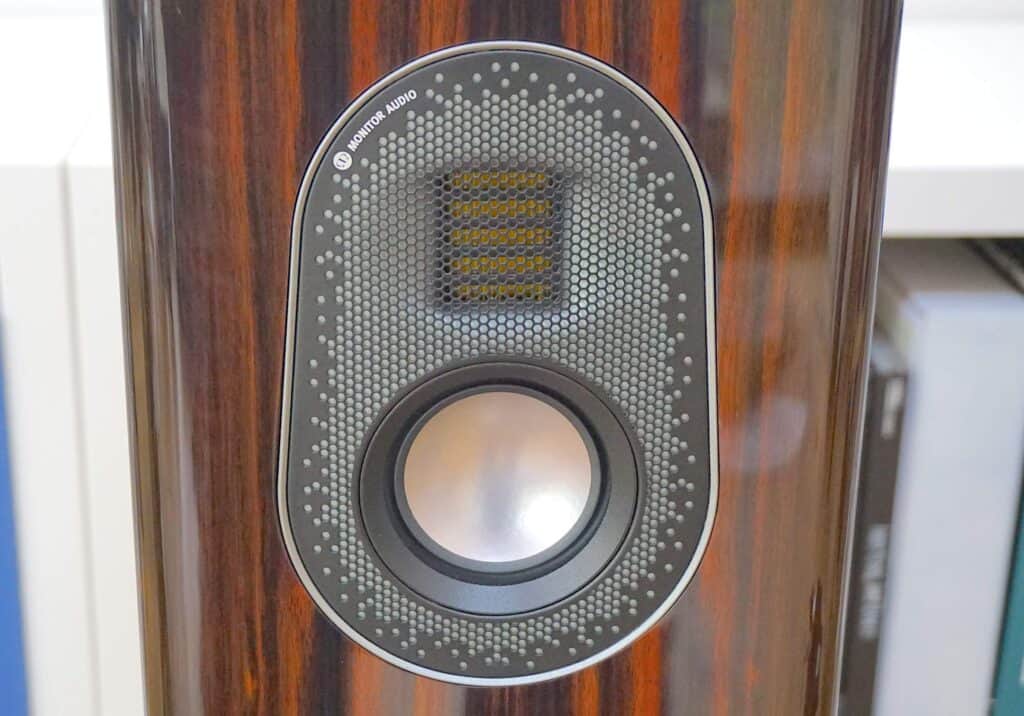
Bass was impressive on the 3050i speakers. Big and room filling. When the percussion first appeared on this track on the 200s though, it hit my jaw with a right cross that sent me flying across the room, landing in a heap in the far corner.
Bass was firm, precise and direct. And let me emphasise the word deep. For the price, bass is seriously impressive. You can use this bass to dig for oil.
LILTING MELODIES
I then turned to vinyl and Roy Wood’s LP, Boulders and the track, Nancy Sing Me a Song. A lilting, low-key melodic piece.
Listening to the lower-cost Monitor Audio’s own Silver 300s, you can hear that house style maturity, that richness in tone and presentation. There’s that 3D effect around the stereo image and the structure around the soundstage.
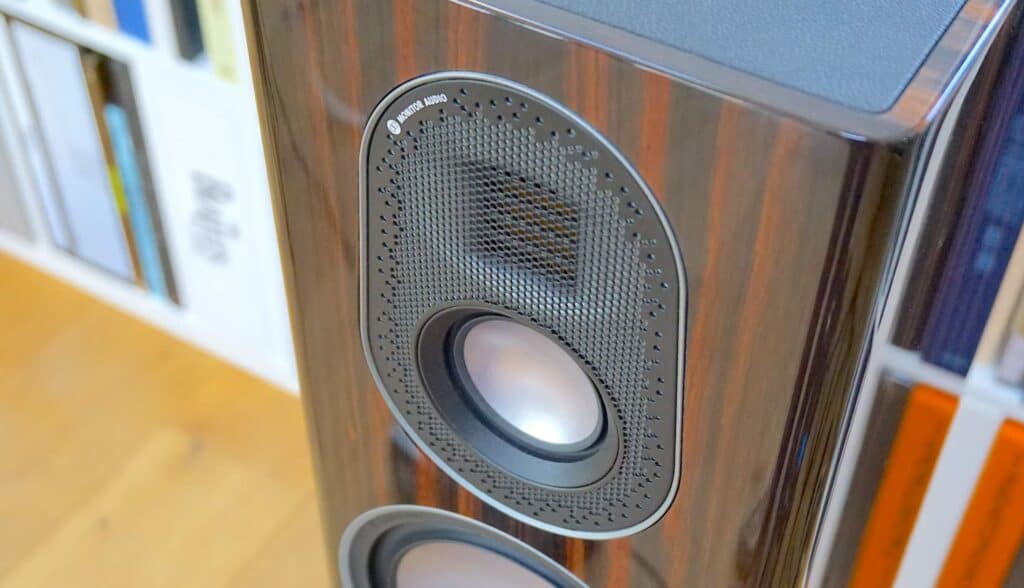
There is a slight midrange/treble edge at high volumes from both speakers although I would also say that the Gold 200s do provide more control around the upper frequencies and greater solidity in the bass regions. Both models provided an open and airy upper midrange but the Golds better controlled this sensitive area. That tweeter must have a big part to play in that achievement.
Nipping back to Pink Floyd now and my rather different, yet similarly priced Quad 57s? The latter extended further control and fragility over the upper mids but couldn’t compete with the 200’s bass performance. The 200s were dominant in this respect. While the overall presentation was civilised and considered via the Quads, that same presentation via the 200s was epic and majestic.
4 OHM MODE
I played the Roy Wood track in this mode. Apart from the vocal, you have drums, acoustic guitars, bass, cello and possibly a mandolin.
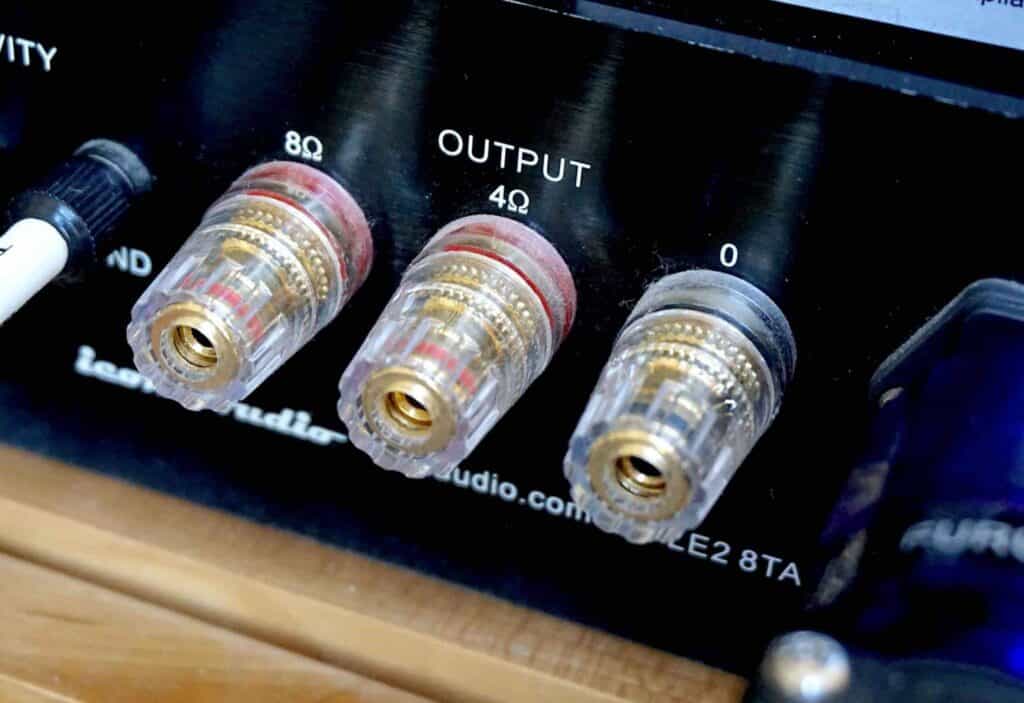
In terms of sound? A complete revelation. If you have these 4 Ohm speakers, moving from an 8 Ohm socket to a 4 Ohm socket is a bit like moving from single-ended play to balanced. The noise floor dropped further. The slight treble/upper midrange edge at high volumes? Gone. Roy Wood’s double tracked lead vocal was far more complex and interesting now. Bass relaxed into a low pleasing thud, bass guitar had a new sense of twang, separation between instruments was much wider now so there was greater detail extraction across the entire soundstage. In short? My jaw dropped listening to these speakers in 4 Ohm mode.
CONCLUSION
Compared to my earlier review? Remarkably consistent I would say – with some relief! The main difference between the two were mainly based on style, the mood I was in that day, what thoughts were rolling around my noggin at that moment, that kind of thing. The core points remain between the two reviews though which is, as I say, a bit of a relief.
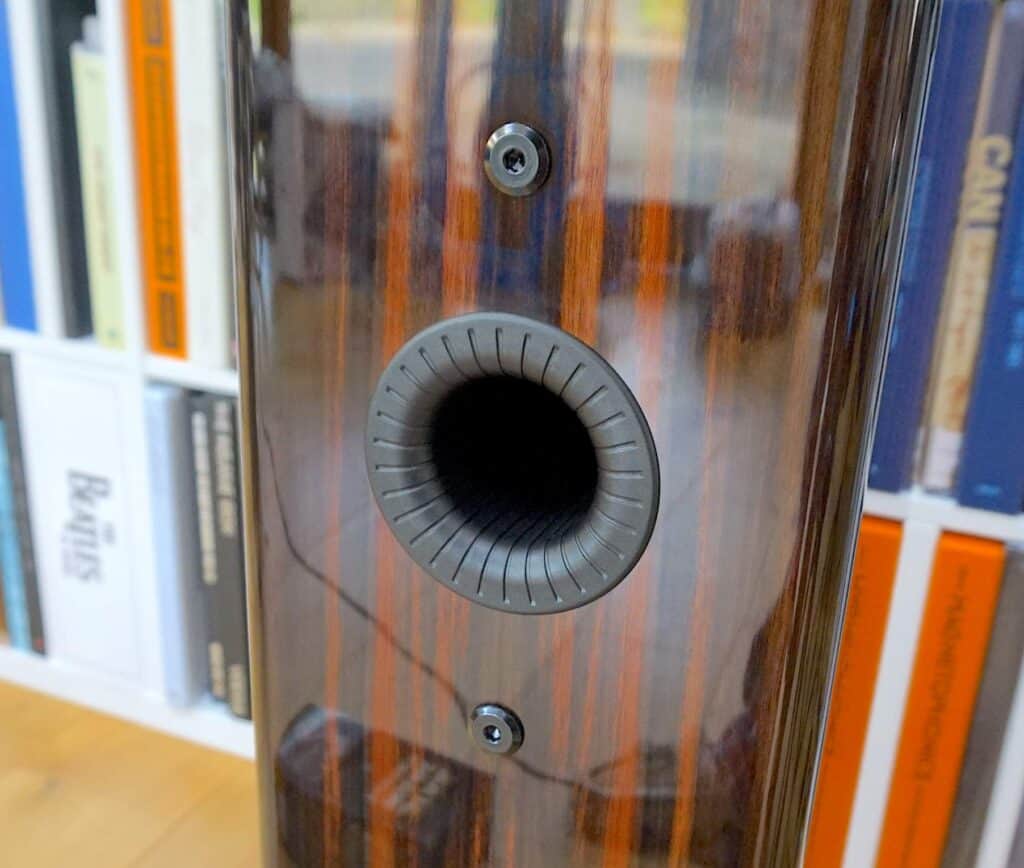
I did focus on different areas in both reviews and possibly spent a little more time talking about the Silver 300s and Quad 57s, this time around.
To be frank, in terms of style and quality of the review itself? Some of my comments in the first review were better explained and conveyed but, I have to add, vice versa too! The second review did address certain aspects more successfully. So, hey, read both for a the full picture!
To answer the initial question on reviews then? Yes, I think older reviews are valuable for the prospective customer and serve as a useful reference. If the review was properly conducted the first time around then it will stand the test of time.
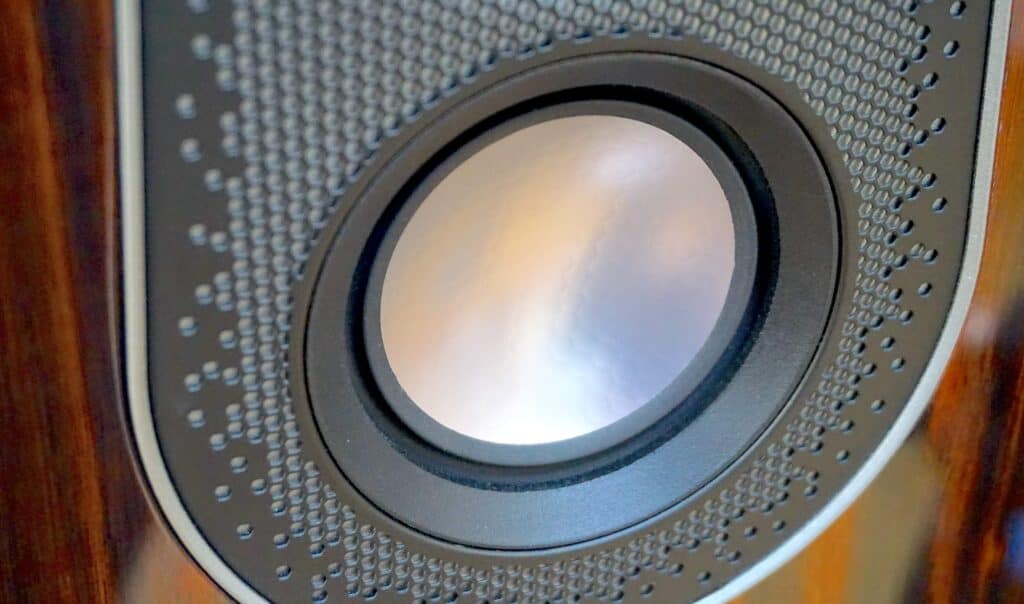
In broad terms and focusing on the speakers themselves? In 8 Ohm mode, The Monitor Audio Gold 200s are speakers for the big occasion. They provide a big-bass performance, bold and forthright midrange detail spews forth.
But then, these speakers are also ideal for the small occasion. For low-key, introspective songs, as I heard via my Roy Wood LP. The extra focus around the upper mids and treble means that low-volume playback is a highlight and, if you are unable to blast your speakers because of neighbourly concerns then consider these speakers for that mission.
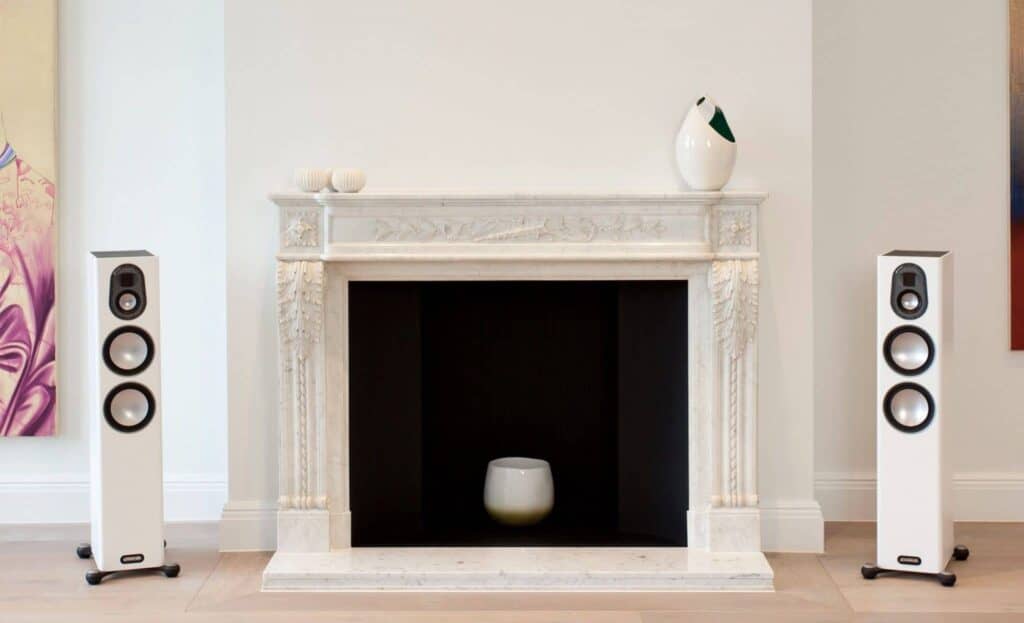
But it’s in 4 Ohm mode that these speakers really come alive. After all, that’s what they are designed to be they not? These are 4 Ohm speakers. That’s what it says in the spec sheet. Not 8 Ohm.
At 8 Ohms they work very well indeed but there will always be a sonic compromise in that mode.
Give the Gold 200s the right tools for the job and they will reward you in spades.
Bottom line then? Whatever mode you decide to use, 4 Ohm or 8 Ohm? At lower or higher volumes? The low-noise, high clarity performance from the 200s drag out maximum detail blending with passion and musical joy.
These are truly speakers for all seasons.
MONITOR AUDIO GOLD 200 SPEAKERS
Price: £3,350
Website: monitoraudio.com
GOOD: 4 Ohm mode, clarity, bass, midrange focus, treble detail
BAD: nothing
RATING: 8 (8 Ohms)

RATING: 9 (4 Ohms)


